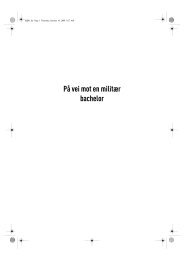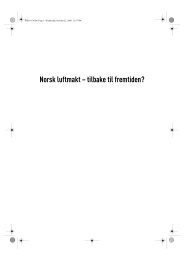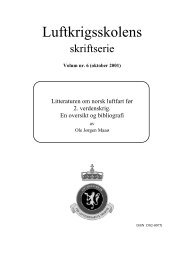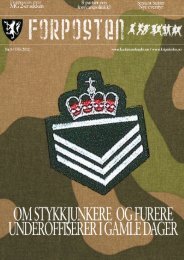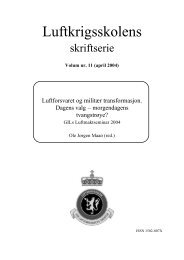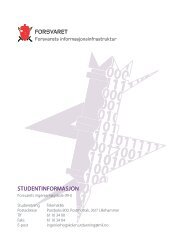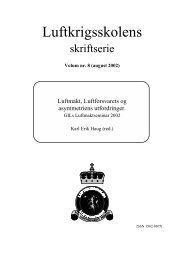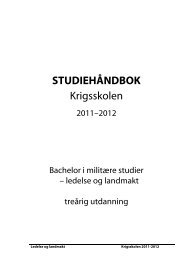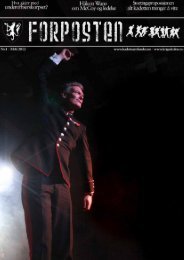Wilhelm Mohr
Wilhelm Mohr
Wilhelm Mohr
Create successful ePaper yourself
Turn your PDF publications into a flip-book with our unique Google optimized e-Paper software.
PART I – The Contribution of the Norwegian Air Forces<br />
Inactive pilots show signs of restlessness<br />
Naturally – and Captain Øen makes the same point – the group of<br />
inactive pilots in London at the time were becoming frustrated and<br />
impatient. Their main wish was to get into the RAF and take their share<br />
in the war as soon as possible.<br />
Captain Øen concluded that, as France had now capitulated, Canada<br />
offered the only opportunity for Norway to establish a training base in<br />
order to raise identifiable Norwegian air units. Such a solution was to<br />
be preferred.<br />
The Government of Norway was by this time established in London.<br />
Captain Øen’s proposal, supported by the Army Command, was<br />
approved on 19 June. A similar arrangement for the training and furnishing<br />
of naval air units was also approved. An aide memoire reflecting<br />
this view was submitted to the British Government on 10 July 1940,<br />
UK renders support. Camp «Little Norway» takes<br />
shape.<br />
It is fair to assume that the Norwegian proposal was not accepted by<br />
the British without reluctance. At the time the British wanted as many<br />
pilots as they could muster. Poles, Czechs, Belgians and Dutch were<br />
already in service. They did, however, acquiesce, whereupon the British<br />
Air Ministry gave the plan its full support.<br />
All efforts were now focused on setting up a joint training establishment<br />
in Canada. This became known as «Little Norway». Rapid progress<br />
was made. The camp was erected adjacent to the Island Airport in<br />
the harbour area of Toronto. Elementary training aircraft of the type<br />
Fairchild PT-19 and then PT-26 Cornell were acquired, and the operational<br />
aircraft on order, mentioned earlier, were delivered. The camp<br />
was inaugurated on 10 November 1940. Personnel at that time numbered<br />
about 300. Most of the student pilots had escaped from Norway<br />
via the UK or via Sweden and Russia (Siberia and the Pacific). Many of<br />
the technical trainees were selected from the Merchant Marine and they<br />
35



